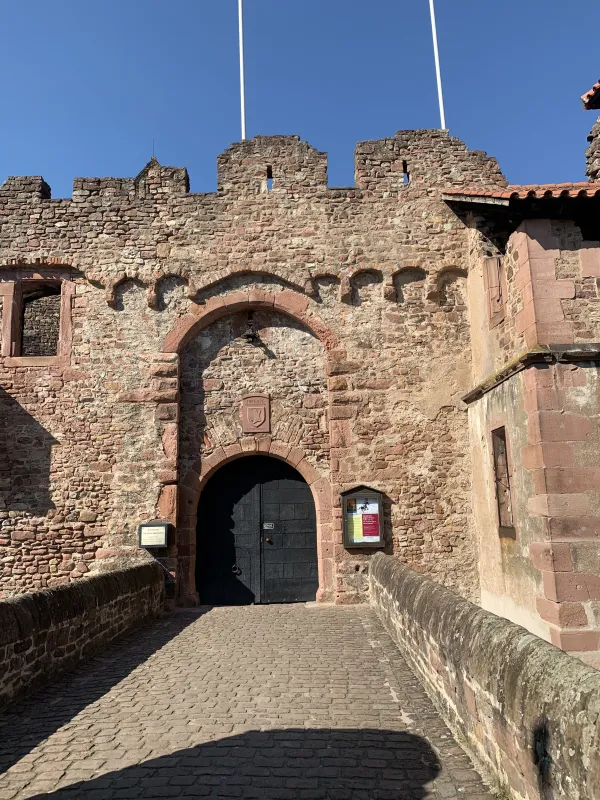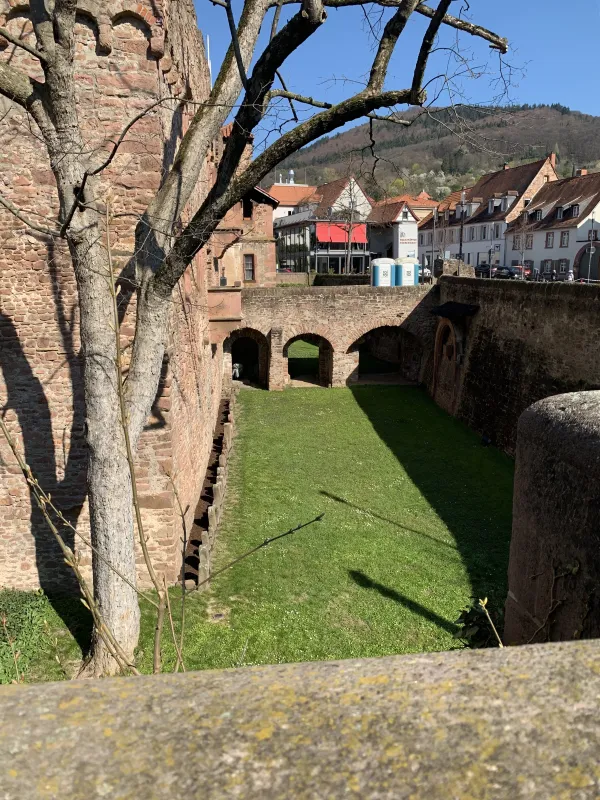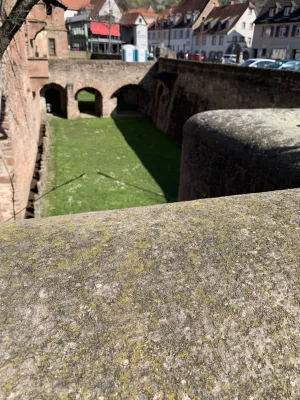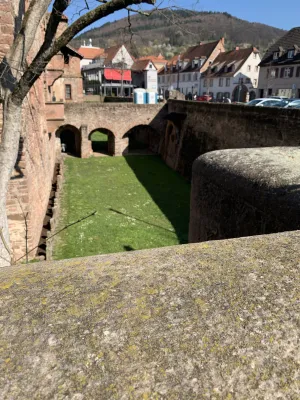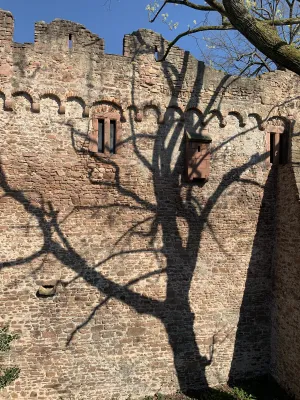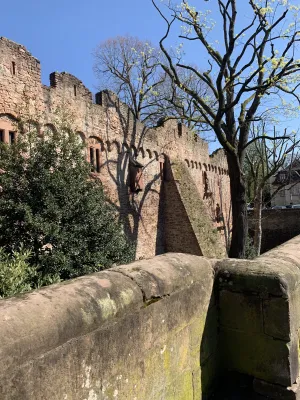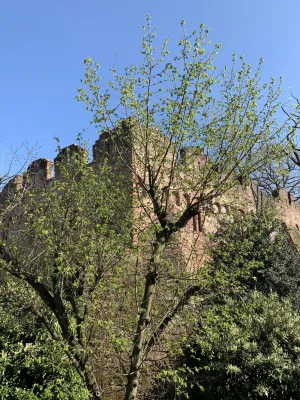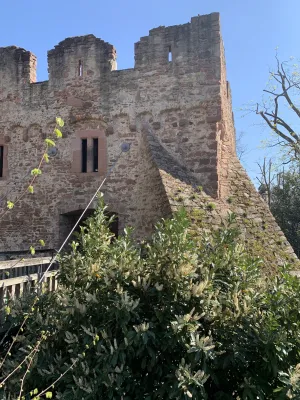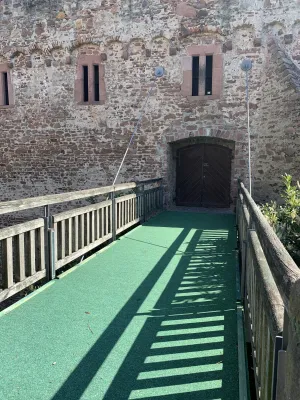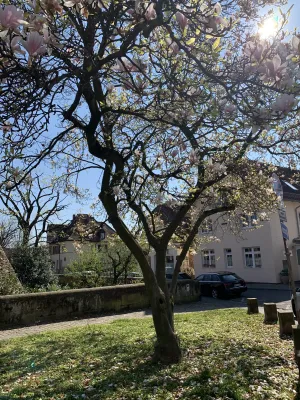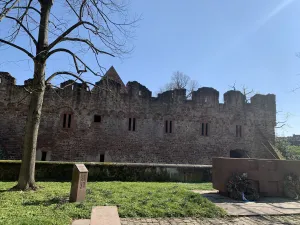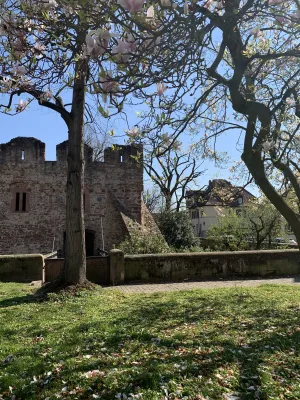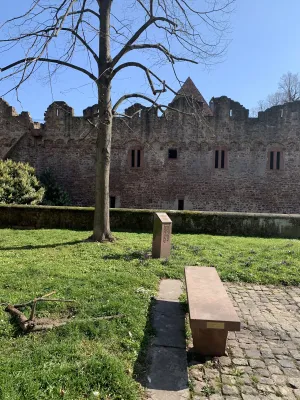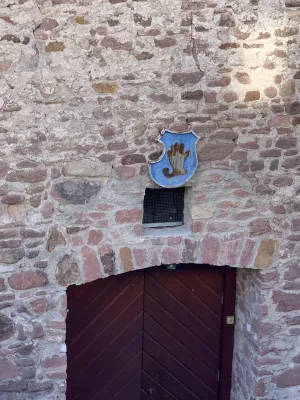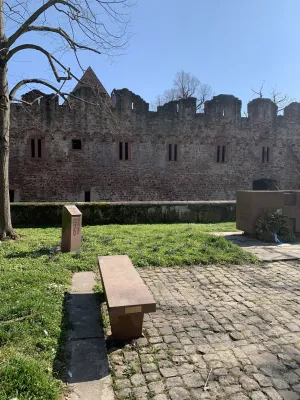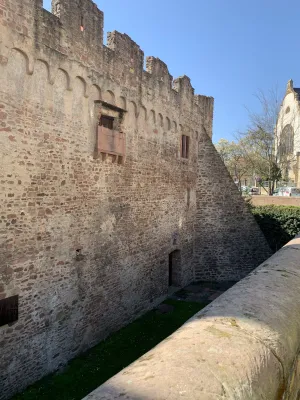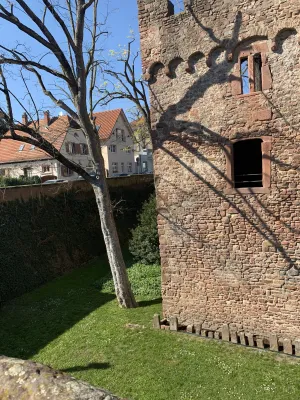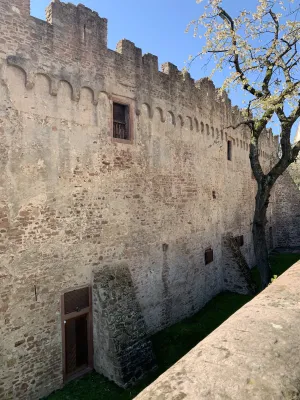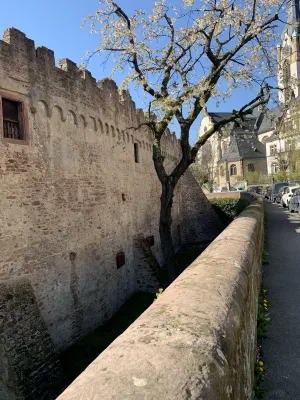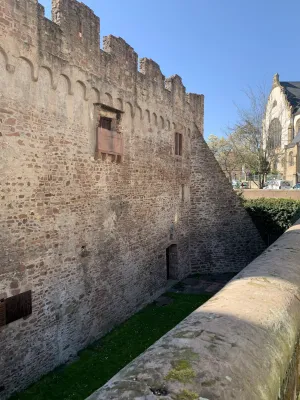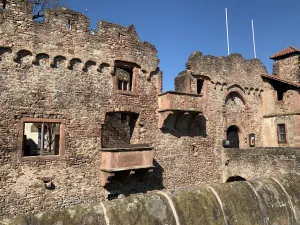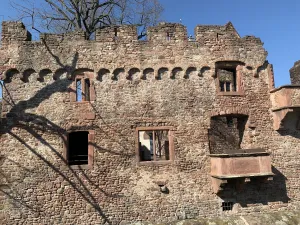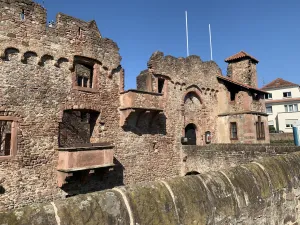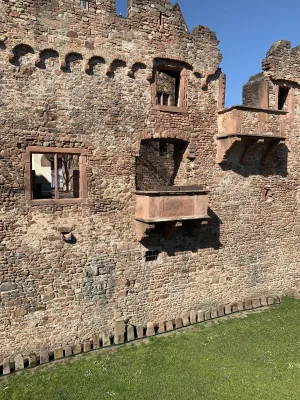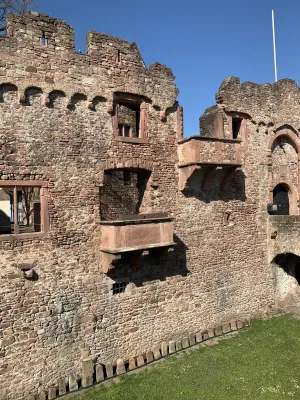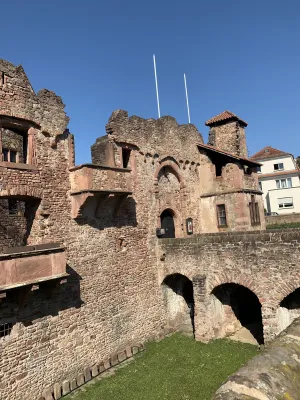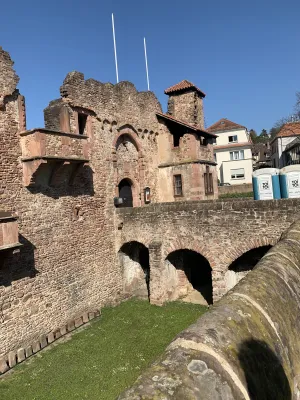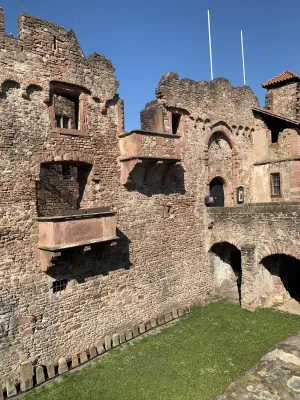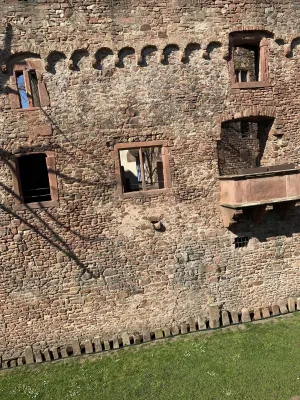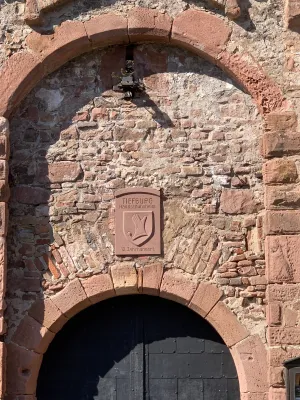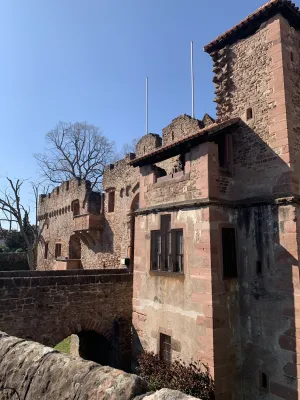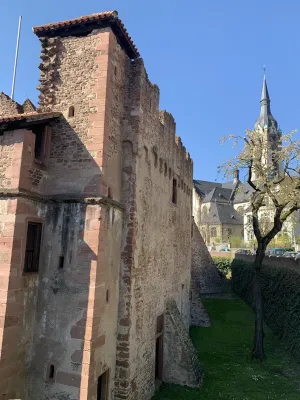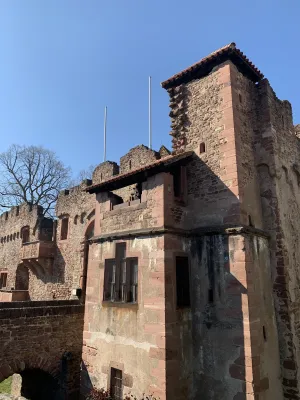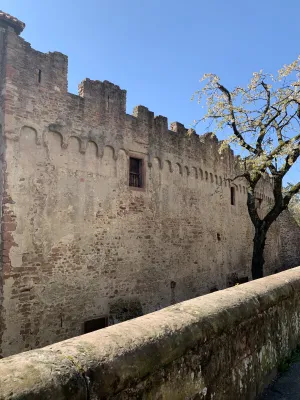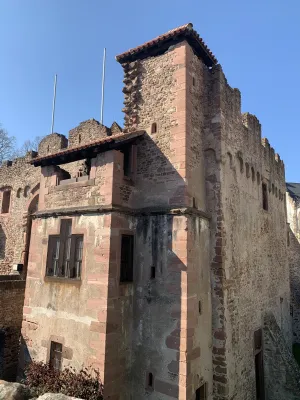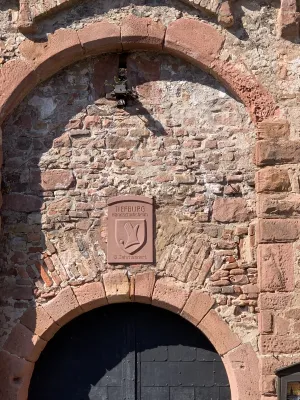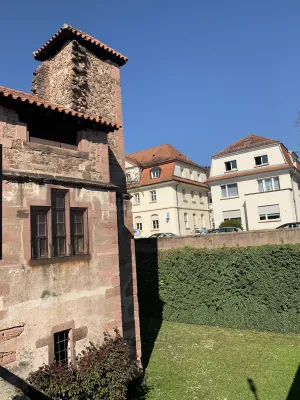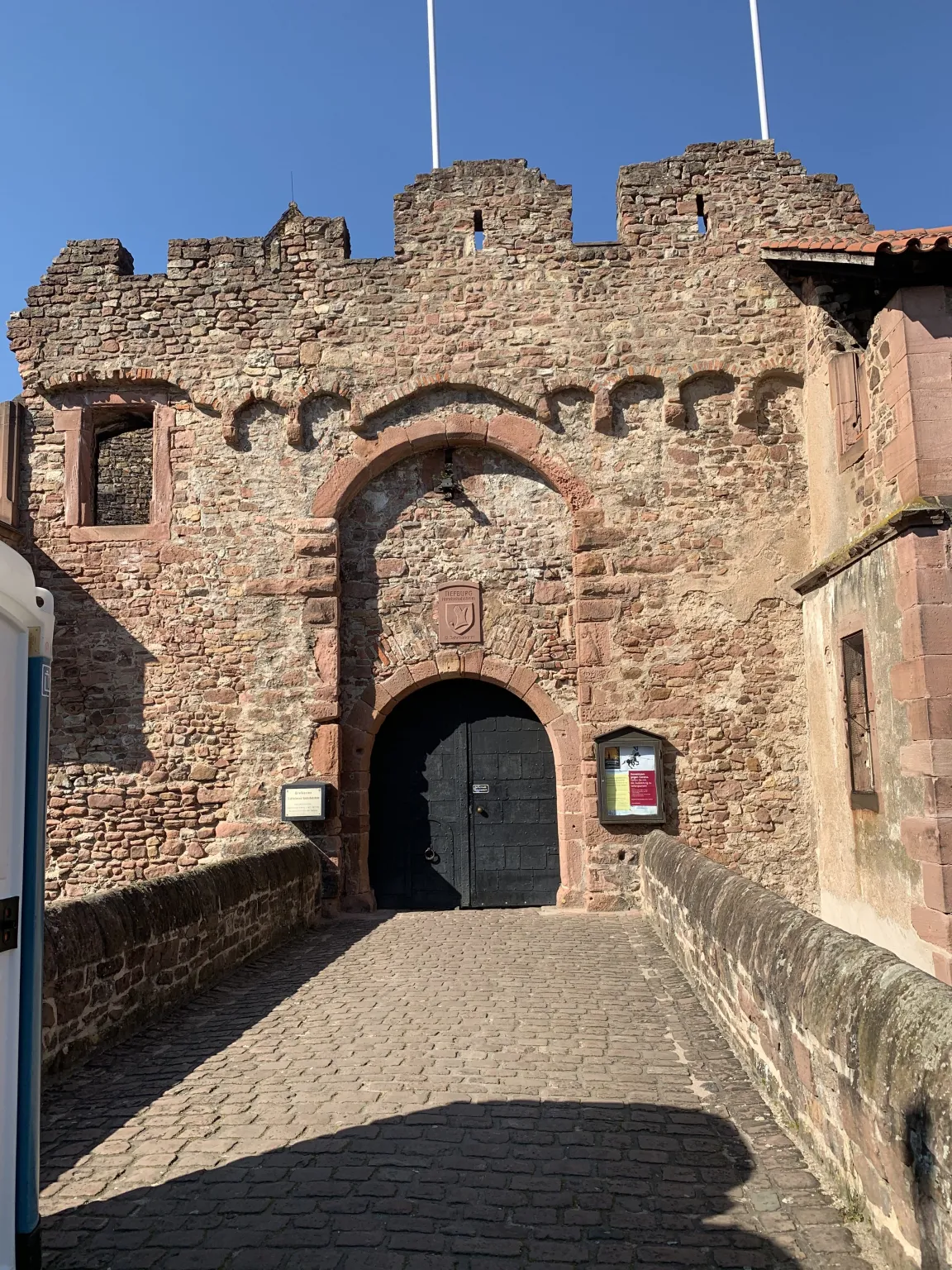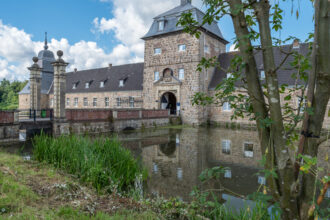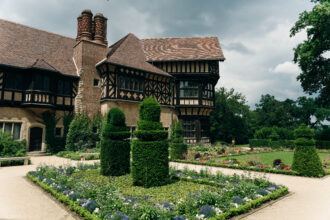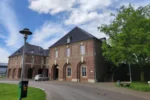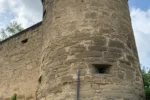A castle of a special kind is located in the centre of the Handschuhsheim district of Heidelberg in the north-western state of Baden-Württemberg. Here stands the Tiefburg, the ruins of a medieval moated castle. The Tiefburg owes its name to its location, as it stands deep in the valley. Possible builders include both Lorsch Abbey and the Counts Palatine of the Rhine, while another option is that the castle originated as a fortified estate. The castle was probably built in the 12th century as a moated castle with a 12-metre-wide moat spanned by a bridge. Tiefburg Castle was the seat of the Knights of Handschuhsheim until 1600. These Knights of Handschuhsheim were initially ministers of Lorsch Abbey, later vassals of the Palatinate Electors. After the last male member of the family, Johann V, lost his life in a duel with the knight Friedrich von Hirschhorn, Tiefburg Castle passed by inheritance to the barons and later counts of Helmstatt. Tiefburg Castle was partially destroyed during the Thirty Years’ War and completely destroyed during the Palatinate-Orléans War of Succession in 1689. Around 1700, a new manor house with stables and barns was built next to the ruins. It was not until 1911 to 1913 that Tiefburg Castle was rebuilt by Count Raban von Helmstatt. From 1921 onwards, it served as a youth hostel until the city of Heidelberg purchased it in 1950. Today, it is an event centre and the headquarters of the Handschuhsheim district association. The ruins of Tiefburg Castle, with its massive foundation walls, defensive towers and imposing balcony balustrades, are truly impressive. Tiefburg Castle also harbours an interesting secret. In 1770, the then owner, Johann Joseph Freiherr von Helmstatt, discovered a knight walled up inside the castle. He found the skeleton in medieval armour in a cavity behind the wall. According to legend, the walled-in knight had had a forbidden affair with a lady from Hirschhorn Castle and was walled in alive as punishment. The armour of the knight found was given as a gift to the Electoral Palatinate General von Rothenhausen. Later, it was brought to the royal antiquities collection in Munich via Elector Carl Theodor. In the meantime, however, the armour has miraculously disappeared. Since 1977, a replica donated by the district association has adorned the site where it was found. The Tiefburg, also known as Handschuhsheim Castle, is a true witness to the Middle Ages and immediately transported me back to a long-forgotten time. The Tiefburg festivals are still celebrated today in the former residence of the noble lords, and on Saturdays the castle serves as a romantic backdrop for the weekly market. The magnificent moated castle ruins, which were once fed by the Mühlbach stream, are well worth seeing and impressed me from the very first moment. The Tiefburg exudes medieval charm like no other castle ruins and simply brings this era back to life.
